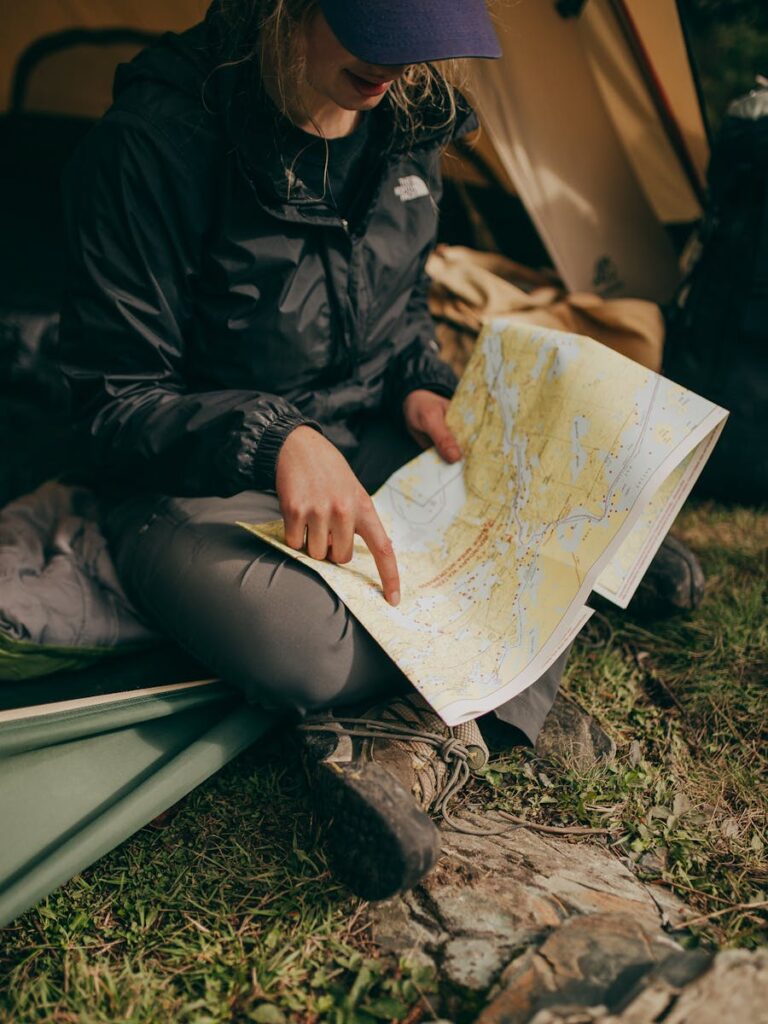
Gene Espy’s passing at 98 marks the quiet close of an extraordinary life, yet his indelible footprint on the American wilderness, particularly the Appalachian Trail, remains as prominent as the mountains he traversed. Recognized widely as the second individual to complete a continuous “thru-hike” of the trail from Georgia to Maine, Espy’s journey in 1951 was more than a physical feat; it was a testament to an adventurous spirit, a profound connection to nature, and an unyielding will that set a precedent for generations of hikers. His death on August 22, confirmed by his daughter Jane Gilsinger, in Atlanta, closes a chapter on a true pioneer whose quiet determination shaped a significant part of outdoor history.
Espy’s expedition spanned 123 arduous days, covering more than 2,000 miles of what was then largely rugged, unmarked wilderness. His accomplishment, undertaken with minimal support and an almost spiritual quest to “see God in nature,” profoundly influenced the nascent culture of long-distance hiking. While the debate over who was truly the “first” to complete the entire trail may persist, Espy’s commitment to the Appalachian Trail community for the remainder of his life cemented his status as a revered figure. He was a role model, a gentleman, and a captivating storyteller, as noted by Larry Luxenberg, president of the Appalachian Trail Museum.
This article delves into the remarkable life of Gene Espy, exploring the early influences that ignited his wanderlust, the meticulous preparation for his historic trek, and the profound challenges and spiritual awakenings he experienced along the untamed path of the Appalachian Trail. We examine how a 24-year-old Georgian embarked on an expedition that would not only define his own life but also inspire countless others to seek solace and challenge amidst the enduring beauty of America’s longest continuous hiking-only footpath. His story is one of unwavering resolve, deep personal conviction, and an enduring legacy etched into the very fabric of the trail itself.

1. **The Early Spark of an Adventurous Spirit** Eugene Marion Espy, born on April 14, 1927, in Cordele, Ga., displayed an adventurous spirit from his earliest years. His youth was marked by a relentless curiosity and a penchant for pushing boundaries, characteristics that would define his most celebrated achievement. Cordele could scarcely contain the burgeoning wanderlust of its native son.
Espy was a trailblazer, becoming the first Boy Scout in Cordele to achieve Eagle Scout rank. This early commitment to outdoor skills and self-reliance laid a foundational groundwork for his future endeavors. His experiences instilled practical knowledge and mental fortitude.
His thirst for thrills extended beyond organized activities. At 16, he embarked on a formidable 740-mile bicycle trek from his Georgia home to Florida and back, an endurance challenge that underscored his exceptional physical and mental resilience. This journey offered an early glimpse into the extraordinary determination that would propel him across thousands of miles of wilderness.
Further illustrating his adventurous nature, Espy taught himself to water ski on homemade skis, gleaning techniques from newsreels. He navigated a 125-mile stretch of the Ocmulgee River in a homemade sailboat and explored numerous caves across the southeastern United States. While a student at Georgia Tech, he even rode his motorcycle up the sloped side of Stone Mountain to its summit, capturing the daring essence of his youth.
Read more about: Red Cars Reign: Unpacking the Psychological and Market Forces Behind America’s Favorite Automotive Hue

2. **Conceiving the Epic Journey: The Appalachian Trail’s Call** The idea of hiking the entire Appalachian Trail first took root in Gene Espy’s mind during his seventh-grade year. A teacher’s discussion about the trail, which had fully opened in 1937, captivated his imagination, planting a seed that would eventually blossom into a monumental undertaking. This early exposure ignited a profound curiosity within him.
Several years later, Espy’s fascination deepened during a week-long hike in the Great Smoky Mountains, a section of the Appalachian Trail itself. This immersive experience, occurring just 14 years after the trail’s completion, provided a tangible taste of the wilderness. It was here that his appetite for a grander adventure was truly whetted, solidifying his nascent ambition.
After completing his bachelor’s degree from Georgia Institute of Technology in 1950, Espy found himself in a sales training position for a hardware company, a job he reportedly disliked. It was in these quiet moments that he began to meticulously plan his ambitious thru-hike. The trail represented an escape, a challenge, and a spiritual quest all rolled into one, drawing him away from the mundane.
His decision to undertake such an arduous journey was not driven by a desire for fame. His daughter, Jane Gilsinger, stated, “He didn’t do it to be the first. He did it to have fun and see God in nature.” This profound motivation, rooted in a personal spiritual quest, provided the underlying purpose for an endeavor that would stretch his physical and mental limits.

3. **Meticulous Preparations for a Wilderness Trek** Undertaking a thru-hike of the Appalachian Trail in 1951 demanded considerable foresight and preparation, especially given the rudimentary nature of gear and trail infrastructure. Gene Espy approached this challenge with practicality honed by his Boy Scout days and engineering background. His approach to equipping himself was both economical and strategic.
He acquired essential gear from practical sources, purchasing a used backpack from an Army surplus store. His hiking shoes came from L.L. Bean, a testament to the brand’s early reputation. Complementing these, he carried a canvas tent for shelter and a rain poncho, vital for protection against the elements. Each item was selected for utility and durability.
Espy’s kit also included a Boy Scout knife, cooking utensils, a miner’s carbide lamp, and two canteens – one for water and the other for gasoline to fuel his tiny stove. These items reflect the self-sufficiency required of a hiker in an era before specialized, lightweight backpacking gear. His choices were a blend of readily available and purpose-specific tools, supporting prolonged solitude.
Beyond physical gear, logistical preparation was critical. Espy requested maps from the National Park Service’s headquarters, using them meticulously and even carrying one in his hat. He constantly checked his position and made revisions, with the NPS asking him to take notes and make revisions along the way. Food and supplies for his entire hike cost approximately $300, reflecting careful budgeting.
Read more about: Gene Espy, Appalachian Trail Pioneer, Dies at 98: Exploring a Life of Adventure, Faith, and Enduring Legacy on the Trail

4. **The Solitary Genesis of a Historic Thru-Hike** On May 31, 1951, Gene Espy, then 24 years old, commenced his monumental journey. He took his first steps from Mount Oglethorpe in northern Georgia, the southern terminus of the Appalachian Trail at that time. This moment marked the beginning of an expedition that would engrave his name into American outdoor history. His initial plan included a hometown friend as a companion.
However, the formidable reality of the trail quickly asserted itself. After just one day on the rugged path, Espy’s hiking companion decided to quit and returned home. This abrupt departure left Espy to face the immense challenge alone, a pivotal moment that immediately transformed his planned shared adventure into a solitary quest. The decision to press on by himself speaks volumes about his resolve.
From that point onward, Espy embraced the solitude, often traveling for a week at a time without encountering another human being. The trail corridor was largely unoccupied, a testament to its relative newness and the limited number of individuals who dared to venture its full length. This isolation resonated with Espy’s deeper motivations, reinforcing his desire for a profound connection with nature.
His solo expedition across 14 states, covering some 2,000 miles, was a continuous trek, known as a “thru-hike.” Only one other person, Earl Shaffer, had reportedly completed it three years prior in 1948, a fact Espy was unaware of until much later. His start at Mount Oglethorpe set him on a northbound course toward Mount Katahdin, forging a legendary story.

5. **Navigating the Untamed Appalachian Wilderness of 1951** The Appalachian Trail that Gene Espy encountered in 1951 bore little resemblance to the more developed path hikers experience today. It was predominantly a rugged wilderness, a work in progress still years away from standardized maintenance and extensive signage. Espy often walked through parts of the trail where few others had ventured, truly pioneering a route.
Sparse trail markers presented a constant challenge to navigation. To counter this, Espy adopted an ingenious method, carrying a map in his hat. He recounted, “Every so often, I would stop and take my hat off, pull out my map, look around and try to figure out where I was.” This reliance on basic cartography and keen observational skills highlights the raw, exploratory nature of his journey.
The physical terrain itself was unrelenting. Espy bushwhacked his way through thick undergrowth, scrambling over rocks and roots. He waded through ponds created by beavers, navigating natural obstacles that added to the arduousness of each day. The sheer physicality of pushing through such undeveloped wilderness demanded immense strength and perseverance.
Moreover, the wilderness presented genuine dangers. Espy reported killing about 15 rattlesnakes during his trek. One night, he awoke to find a raccoon licking dehydrated milk. More alarmingly, he slept atop a 55-foot fire tower to escape being attacked by howling wildcats, illustrating real and immediate threats from the untamed environment.

6. **Resourcefulness and Resilience: Sustenance on the Primitive Trail** Sustaining himself over 123 days on the Appalachian Trail in 1951 required remarkable resourcefulness and meticulous planning for Gene Espy. Without modern ultralight backpacking food or an established network of resupply points, Espy devised a diet both practical and sufficient for his demanding physical output. His culinary approach prioritized calorie density and ease of preparation.
His meals primarily consisted of simple, no-cook options. He relied on dehydrated mashed potatoes and boiled cornmeal, enhanced with sugar, raisins, and powdered milk. These staples formed the core of his diet, providing energy for averaging about 16 miles a day, and sometimes even more than 30 miles. The simplicity of his food choices underscored logistical constraints.
To manage his supplies, Espy employed a strategy that foreshadowed modern ultralight backpacking: mailing himself packages to post office boxes in towns along the way. This foresight allowed him to replenish essential items like replacement boots and food without carrying an unmanageable load. This system demonstrated a pragmatic understanding of long-distance hiking logistics in an era when such support was not common.
Despite the physical hardships and isolation, Espy maintained strong mental and spiritual fortitude. “I never thought about giving up,” he told The Macon Telegraph in 1997. He regularly read his Bible, finding solace and strength. Furthermore, he articulated a profound appreciation for his surroundings, stating, “I was always busy seeing all kinds of beautiful sites, waterfalls and mountains,” preventing loneliness.

7. **The Profound Transformation: Physical and Spiritual Journey** The four-month odyssey on the Appalachian Trail left an undeniable mark on Gene Espy, effecting profound transformations both physically and spiritually. The rigors of traversing over 2,000 miles of wilderness honed his body and deepened his connection to the natural world. His appearance at the end of the trek was a visual testament to its arduous nature.
Photographs from the end of his hike on Mount Katahdin show a significantly changed man. The slightly built Espy had lost 28 pounds, appearing visibly thinner but undoubtedly hardened by the experience. He grew a thick, red beard, a symbol of his immersive engagement with the wilderness. He also wore out three pairs of hiking boots, indicating the sheer mileage and demanding terrain.
Beyond the physical changes, Espy’s journey was characterized by a profound sense of purpose and unwavering mental resilience. He famously stated, “I never thought about giving up,” a declaration speaking to an inner strength that propelled him. His ability to maintain this mindset through obstacles highlights an exceptional level of determination and mental toughness.
For Espy, the trail was also a spiritual quest. He embarked with the explicit goal “to see God in nature,” a motivation providing deep meaning to his solitary trek. This spiritual dimension fostered constant engagement and beauty in his surroundings, preventing loneliness. His act of kneeling down in prayer upon reaching Mount Katahdin on September 30, 1951, encapsulates the spiritual fulfillment. “It had been one of the highlights of my life,” he later explained.

8. **Triumphant Completion at Mount Katahdin: A Spiritual Zenith**The arduous journey of Gene Espy culminated on September 30, 1951, as he reached the northern terminus of the Appalachian Trail, Mount Katahdin in Maine. After 123 days of continuous trekking, covering over 2,000 miles of rugged wilderness, this final ascent marked not merely the end of a hike but the fulfillment of a deeply personal and spiritual quest. Photographs from this momentous occasion depict a man visibly transformed, thinner yet undeniably hardened by the experience, sporting a thick red beard that symbolized his immersion in the wild.
Upon reaching the iconic sign marking the northern terminus, Espy performed an act that encapsulated the spiritual core of his endeavor. He knelt down in prayer, offering thanks to God “for watching over me and allowing me to make the hike.” This poignant moment underscored his primary motivation: “to see God in nature.” It was a profoundly intimate act, revealing the spiritual sustenance that had buoyed him through months of solitude and physical demanding effort, reinforcing that his journey was far more than a physical challenge.
His arrival was not met with fanfare or crowds, reflecting the nascent stage of long-distance hiking at the time. Yet, for Espy, the accomplishment was immense and deeply satisfying. He later explained, “It had been one of the highlights of my life.” This quiet triumph, steeped in personal conviction and gratitude, established a precedent for countless future thru-hikers who would seek similar profound connections with the natural world.
The immediate aftermath of his hike was as practical as his preparations. After leaving Mount Katahdin, Espy hitchhiked to Boston, a city far removed from the wilderness he had just conquered. There, he spent $100 on new clothes, replacing his worn-out trail attire, and purchased a bus ticket to return home to Georgia. This swift return to civilization marked a sharp contrast to the four months of self-reliance, yet it was a necessary bridge back to the life he had paused for his monumental journey.

9. **A Life Forged by the Trail: Career and Family**Returning from his epic trek, Gene Espy seamlessly transitioned back into civilian life, though the trail’s imprint remained indelible. Three years after completing his hike, in 1954, he married Eugenia Bass, embarking on what would become a fulfilling 71-year marriage. Together, they built a family, raising two daughters, Jane Gilsinger and Ellen Holliday, and later enjoying the presence of two granddaughters, grounding his adventurous spirit in the warmth of domestic life.
Professionally, Espy pursued a career rooted in his education. Having earned a bachelor’s degree in industrial management and engineering from the Georgia Institute of Technology in 1950, he applied his skills across various sectors. Over five decades, he worked as an engineer, contributing his expertise to a foundry and machine company, an apparel manufacturer, a frozen food plant, a Naval ordinance plant, and Robins Air Force Base. His diverse professional life reflected a diligent work ethic and a steady commitment to his craft.
Espy officially retired in 1995, concluding a distinguished career that spanned half a century. Despite his many professional endeavors, it was his pioneering hike that truly captivated the public imagination. His former home in Macon, Georgia, later transformed into an unofficial “mecca” for aspiring thru-hikers. Individuals would bring their packs to his house, seeking his invaluable advice on what to carry and what to leave behind, with Espy consistently advocating for carrying only the essentials and keeping one’s pack as light as possible.
His wife, Eugenia, affectionately described her husband as a romantic, noting that he would often wake her to tell her, “I love you.” This tender side complemented his adventurous spirit, showcasing a multifaceted individual who cherished both the wild frontiers and the intimate bonds of family. His enduring marriage and dedicated career provided a stable foundation, allowing him to quietly nurture the legacy of his extraordinary thru-hike.
Read more about: Gene Espy, Appalachian Trail Pioneer, Dies at 98: Exploring a Life of Adventure, Faith, and Enduring Legacy on the Trail

10. **An Enduring Commitment: Nurturing the Appalachian Trail Community**Gene Espy’s connection to the Appalachian Trail transcended his personal feat; he remained an active and consistent part of the trail community for the remainder of his life. His engagement provided a continuous bridge between the trail’s pioneering era and its modern evolution, making him a revered figure among hikers and conservationists alike. This enduring commitment was a hallmark of his character, distinguishing him among early thru-hikers.
He was deeply involved with the Georgia Appalachian Trail Club, contributing his time and experience to the organization dedicated to maintaining and promoting the trail within his home state. Furthermore, Espy gave workshops at Appalachian Trail Conservancy events, sharing his wisdom and practical advice with new generations of hikers. His insights, stemming from a time when the trail was truly rugged wilderness, were invaluable to those navigating its more developed, yet still challenging, contemporary paths.
Espy made frequent appearances at popular hiking festivals, such as Trail Days, where he would chat with hikers, offering encouragement and anecdotes from his historic journey. He returned to the Appalachian Trail not just for section hikes, but also to engage with others, often near Amicalola Falls State Park, a popular starting point for many northbound thru-hikers today. His presence at these events and locations provided a direct link to the trail’s rich history, inspiring countless individuals.
Larry Luxenberg, president of the Appalachian Trail Museum, emphasized this aspect of Espy’s legacy, stating, “One thing that separated Gene from the other pioneer thru-hikers was that Gene remained an active, consistent part of the trail community for the rest of his life.” Luxenberg further praised Espy as “a great role model for hikers,” describing him as “always encouraging and a gentleman and a fascinating storyteller.” His willingness to share his experiences and offer guidance cemented his status as a beloved mentor and elder statesman of the AT community.

11. **Recognition and Commemoration: Preserving a Pioneer’s Story**While Gene Espy did not seek notoriety for his hike, his monumental achievement and lifelong dedication to the Appalachian Trail ultimately garnered significant recognition. His story, initially documented in local newspaper clippings during his trek, eventually found a broader platform, ensuring his place in outdoor history. This acknowledgment came through various forms, celebrating his unique contributions and inspiring future generations.
In 2008, Espy published his autobiography, “The Trail of My Life: The Gene Espy Story.” This personal account offered an in-depth look at his pioneering journey, providing invaluable insights into the challenges and triumphs of thru-hiking in 1951. The book achieved wide recognition, being displayed in prestigious institutions ranging from the Smithsonian Museum in Washington, D.C., to L.L. Bean in Freeport, Maine, underscoring its cultural and historical significance.
A crowning honor came in 2011 when Espy was inducted into the charter class of the Appalachian Trail Museum’s Hall of Fame, alongside five other distinguished figures, including Earl Shaffer. Notably, at the time of the inaugural ceremony on June 17, 2011, Espy was the only one of the six honorees still living, a testament to his enduring presence. A carved bust of Espy remains at the Hall of Fame, located at Pine Grove Furnace State Park in Pennsylvania, near the trail’s midpoint, serving as a permanent tribute to his legacy.
Beyond these major recognitions, other commemorations cemented his place in trail lore. He was among those who cut the ribbon for the dedication of the visitor’s center at Amicalola Falls in 2023. A commemorative plaque honoring him was also placed where a section of the trail crosses the Richard Russell Scenic Highway, between Helen and Blairsville, Georgia. These various tributes ensure that Gene Espy’s name and his pioneering spirit continue to resonate along the very trail he helped define.

12. **A Unique Friendship: Espy and Shaffer, the Trail’s First Pioneers**Gene Espy’s journey, although undertaken in solitude, eventually connected him with the man credited as the Appalachian Trail’s first thru-hiker, Earl Shaffer. Espy was unaware of Shaffer’s 1948 accomplishment during his own trek until a farmer showed him a newspaper clipping. This eventual meeting and subsequent friendship between the two pioneers added a unique dimension to their individual legends, uniting the narratives of the trail’s earliest continuous explorers.
Espy and Shaffer met in the 1950s and developed a friendship that bridged their shared, yet distinct, experiences on the trail. Shaffer, known by the nickname “Crazy One,” was a colorful character, remembered for living in a log cabin in Idaville, Pennsylvania, just five miles from the Appalachian Trail, alongside his cats and goats. His unconventional lifestyle mirrored the rugged independence required of early thru-hikers, creating a bond of mutual respect with Espy.
A memorable encounter between the two men occurred in 1965 when Espy and his daughters were hiking on the trail in Georgia. Jane Gilsinger, Espy’s daughter, vividly recalled the moment: “We heard this crashing in the woods and this scruffy man came at us. He looked at us and said, ‘Gene Espy!’ And my father said, ‘Earl Shaffer!’” Shaffer was reportedly “really depleted physically” at the time, and the Espy family took him into town, provided him with supplies, and helped him “perk up.” This anecdote beautifully illustrates the camaraderie and mutual support that defined their friendship.
Earl Shaffer passed away in 2002, but his legacy, intertwined with Espy’s, continues to be celebrated within the Appalachian Trail community. Their friendship, born from the shared experience of traversing an untamed wilderness, represents a crucial chapter in the trail’s history, highlighting the personal connections forged by monumental feats of endurance and the enduring spirit of the early pioneers.
13. **The Historical Debate: Who Was Truly First?**While Gene Espy is widely recognized as the second person to complete a continuous thru-hike of the Appalachian Trail, his journey in 1951 sparked a historical debate regarding the true identity of the “first” thru-hiker. This discussion, fueled by evolving understandings of the trail’s route in its early days, highlights the complexities of documenting pioneering achievements in undeveloped wilderness areas.
Earl Shaffer is officially credited by the Appalachian Trail Conservancy as the pioneer, having completed his thru-hike in 1948. However, an intriguing historical claim, put forth by at least one trail historian, suggests that Espy might have actually been the first to complete the entire *official* Appalachian Trail route. This claim hinges on the assertion that Shaffer reportedly bypassed approximately 170 miles of the trail by taking shortcuts on country roads and even traveling for short distances as a hitchhiker, deviating from what some consider a “continuous” footpath.
Espy, for his part, remained unconcerned with the notion of being “first.” His daughter, Jane Gilsinger, clarified his motivation, stating, “He didn’t do it to be the first. He did it to have fun and see God in nature.” This perspective aligns with Espy’s own words, “I had one goal — to see God in nature,” emphasizing that his journey was driven by a spiritual quest rather than a pursuit of notoriety or record-breaking.
This debate underscores the primitive nature of the Appalachian Trail in its early years, when markers were sparse, and the path itself was “a work in progress.” The lack of precise, standardized mapping and trail maintenance meant that what constituted the “entire” trail could be open to interpretation. Regardless of the historical nuance, Espy’s humble approach and profound spiritual motivation remain central to his story, showcasing a man whose integrity was as unyielding as his physical endurance.

14. **Lasting Impact and Enduring Legacy: A Life Etched into the Trail**Gene Espy’s passing at 98 marked the conclusion of a life not merely long, but profoundly impactful. His 1951 thru-hike of the Appalachian Trail was more than a personal accomplishment; it was a foundational moment in American outdoor history, helping to shape the nascent culture of long-distance hiking and leaving an indelible legacy that continues to inspire. He represented a generation of trailblazers who pushed boundaries and sought deeper meaning in the wilderness.
His character, as noted by Larry Luxenberg of the Appalachian Trail Museum, made him a truly exceptional figure. Luxenberg lauded Espy as “a great role model for hikers,” describing him as “always encouraging and a gentleman and a fascinating storyteller.” This combination of humility, wisdom, and an unwavering commitment to the trail community ensured that his influence extended far beyond the miles he personally traversed. He became a living bridge to the trail’s past, guiding those who sought to follow in his footsteps.
Espy’s philosophy, centered on a desire “to see God in nature,” infused his journey with a spiritual depth that resonated with many. This motivation transcended physical challenge, imbuing his trek with a profound sense of purpose that he carried throughout his life. It was this intrinsic connection to the natural world, rather than external validation, that drove him and ultimately enriched his experience.
From his early days as Cordele’s first Eagle Scout to his quiet counsel to aspiring hikers, Espy embodied the spirit of adventure and self-reliance. His autobiography, Hall of Fame induction, and the various commemorative plaques serve as enduring testaments to his contributions. He taught that the greatest journeys are not just about distance covered, but about the personal growth, spiritual connection, and human bonds forged along the way. His legacy is etched into the very fabric of the Appalachian Trail, an eternal whisper among the mountains he so deeply loved.
Read more about: Hollywood Legends: 13 Iconic Actresses You Rarely See on Screen Anymore (and Why We Still Love Them!)
The quiet determination of Gene Espy, the man who walked through an untamed American wilderness to find solace and spiritual fulfillment, continues to resonate through the valleys and peaks of the Appalachian Trail. His life, marked by pioneering adventure and unwavering commitment, serves as a timeless reminder that some of the most profound journeys are those taken with an open heart and a deep respect for the natural world. As hikers continue to embark on their own quests, Espy’s spirit endures, a guiding light for all who seek the transformative power of the long path, urging them to embrace the challenge, find beauty in solitude, and cherish the enduring call of the wild.




